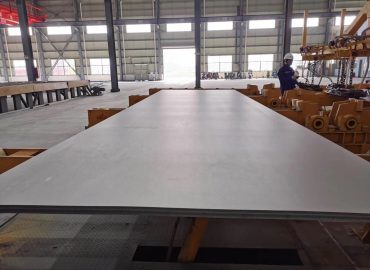ASTM A36 metal second of inertia
China United iron and steel limited produce ASTM A36 steel sheets and steel plates. Our main products are ASTM A36 steel plate, ASTM A36 steel coil, ASTM A36 H Beam, ASTM A36 IPN, ASTM A36 UPN, ASTM A36 IPE, ASTM A36 round bar.
This allows A36 metal to be easily machined, welded, and shaped, making it extremely useful as a common-objective metal. The low carbon additionally prevents heat remedy from having much of an effect on A36 metal. A36 metal usually has small amounts of different alloying components as well, including manganese, sulfur, phosphorus, and silicon. These alloying components are added to provide A36 steel its desired chemical and mechanical properties. Since A36 does not contain giant amounts of nickel or chromium, it does not have wonderful corrosion resistance.
Unlike most AISI grades such as 1018, 1141, or 4140, American Society for Testing and Materials A36 metal isn’t designated by chemical composition. This signifies that while most grades should have added alloys that fit between certain percentages, A36 must meet specific mechanical requirements. For instance, metal bars and plates will need to have a minimum yield power of 36,000 kilos per square inch.
Steel grading methods consider chemical composition, therapy, and mechanical properties to enable fabricators to select the suitable product for his or her software. Aside from the precise share of carbon and other alloys in the material, the microstructure additionally has a major influence on the mechanical properties of metal. When it involves a superb mixture of mechanical properties corresponding to tensile energy, shear strength, toughness, hardness, and ductility, it’s onerous to beat carbon metal. Low carbon steels are classified by having less than 0.3% carbon by weight.
ASTM A36 steel vs 6061 aluminum
ASTM A36 steel vs 4150
- Unlike most AISI grades such as 1018, 1141, or 4140, American Society for Testing and Materials A36 steel isn’t designated by chemical composition.
- Steel is one of the commonest metals used for structural applications.
- This means that while most grades should have added alloys that match between sure percentages, A36 should meet specific mechanical requirements.
- For instance, metal bars and plates will need to have a minimal yield energy of 36,000 pounds per sq. inch.
High carbon steel is first heated above the higher crucial temperature. Then it’s maintained, cooled to the decrease critical temperature, and maintained once again. This process ensures that the fabric reaches a uniform temperature and microstructure before the next cooling step. It is important for steel manufacturers and consumers to understand the microstructure of metal and the way it impacts the mechanical properties of the fabric.
Carbon content material, alloy concentrations, and finishing methods all have an impact on the microstructure and can therefore be used to manipulate the properties of the finished product. It is feasible for two samples with the same alloy content to have totally different microstructures relying on the finishing methods and heat therapies used. When carbon metal is heated into the austenite range—after which cooled without any alloy current to maintain the austenite form—the microstructure reverts to the ferrite form. However, if the carbon content is bigger than 0.006%, the excess carbon atoms mix with iron to type a chemical compound known as iron carbide , also referred to as cementite. Cementite does not occur on its own because some of the material will stay in ferrite kind.
While there are some chemical composition necessities that A36 steel must adhere to, the most important attribute is the yield power requirement. Steel is one of the most typical metals used for structural functions. As there are lots of different types of metal available, each with unique chemical and mechanical properties, it is very important know some of the key attributes of A36 metal.
For ASTM A36 S275JR S235JR mechanical properties, S275JR yield strength is larger than A36 yield strength, and S275JR tensile strength can also be higher than A36 tensile energy. EN S275JR steel has better complete efficiency than ASTM A36 metal. From the comparability desk, it’s not onerous to search out that Astm A36 equal grade in EN is S235JR. In practical terms, “gentle metal” typically refers to any low energy, carbon steel with a carbon degree less than 0.2 percent. Neither is it lined when it comes to tolerances or high quality by any normal, which clearly makes it unsuitable the place any of the specs or traits could also be crucial.
It’s power, formability, and wonderful welding properties make it suitable for a large variety of functions, together with welding, fabricating, and bending. It also needs to be noted that A36 has a decrease yield strength than C1018 which ends up in increased bending capabilities over C1018 steel.

